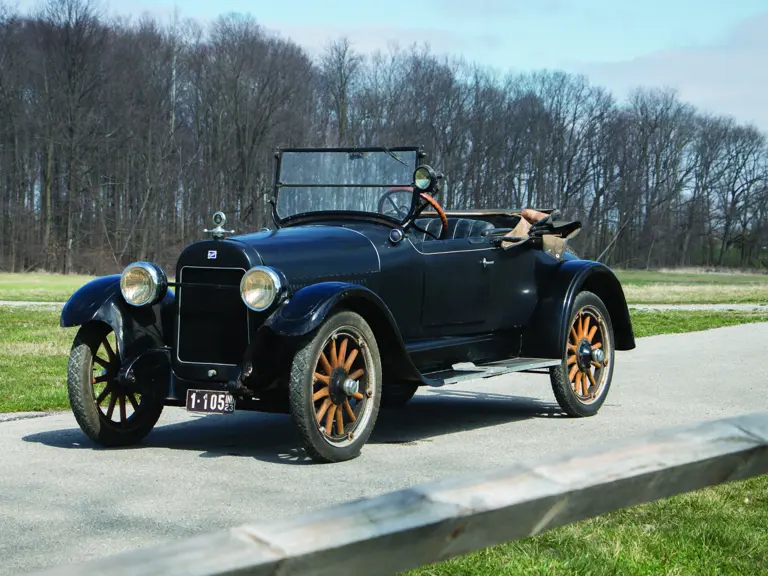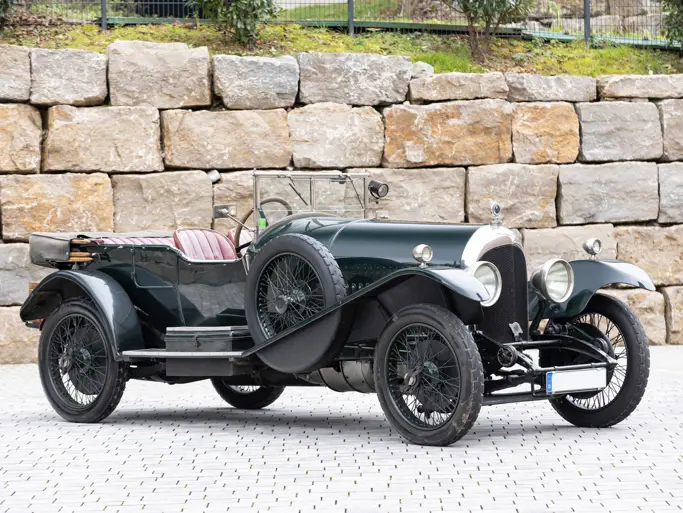
1923 Buick Series 23-Six
{{lr.item.text}}
$11,000 USD | Sold
{{bidding.lot.reserveStatusFormatted}}
- 170-cid, 35-hp inline four-cylinder engine
- Three-speed manual transmission
- Only 6,488 Model 23-44 Three-Passenger Roadsters built in 1923
- Marvel carb & Buick-labeled Boyce Moto-meter
- Buick step plates
- AACA & BCA eligible
- Original-type appearance
- Wood spoke wheels
- Rear-mounted spare
- Spotlight with small mirror
- Dual cowllights
For the 1923 model year, Buick styling was substantially improved with crowned fenders, cowllights and new drum-shaped headlights. The 1923 Buick also received a fresh appearance with its new grille design; this feature would remain virtually unchanged through 1927. Technical improvements included repositioned rear spring hangers, a lower suspension system and a transmission lock. An increase in engine life was achieved through a harder cylinder casting, a larger crankshaft and stronger connecting rods, pistons and main bearings.
Presented in a condition reminisce of an original car, this Buick is stamped on the cowl tag as a 23-44 which translates to a three-passenger roadster. This represents one of only 6,488 Model 23-44 Three-Passenger Roadsters that were built in 1923, whereas over 45,000 1923 Buick Touring Series 23-45’s were produced, making it quite uncommon. Its features include 170 cubic inch, four cylinder engine that develops 35 horsepower; it is matched with a three-speed manual transmission. The engine has a Marvel carburetor and a Boyce Moto-meter with Buick emblem is on the radiator. Among the equipment are Buick step plates, folding top, driver’s side spotlight with small rearview mirror, wood spoke wheels, rear-mounted spare, plus a box with wiring diagram and wiring components.
This early American car is eligible for AACA (Antique Automobile Club of America) or BCA (Buick Club of America) events and would be well suited for the discriminating collector or museum.


 | Auburn, Indiana
| Auburn, Indiana


